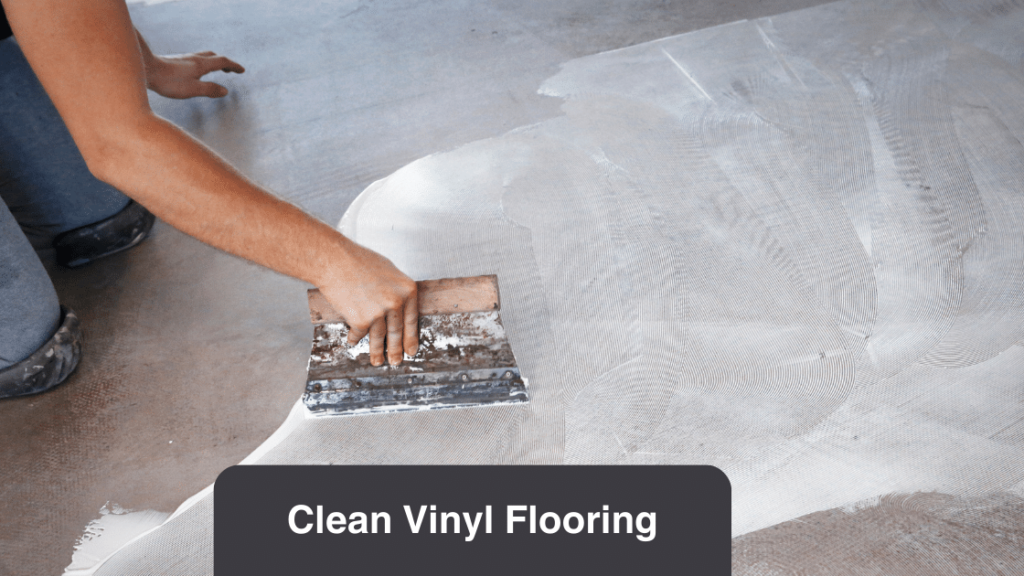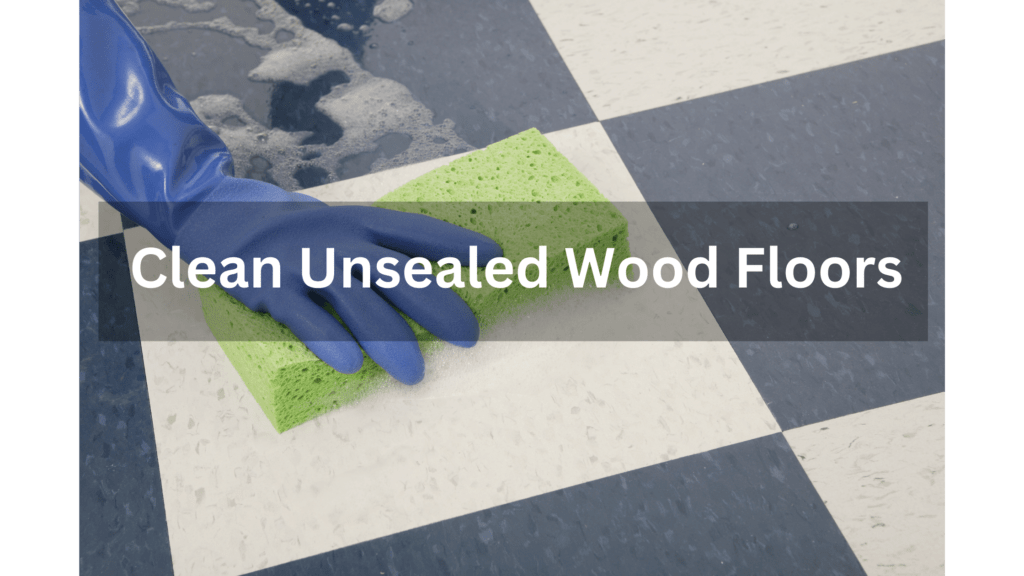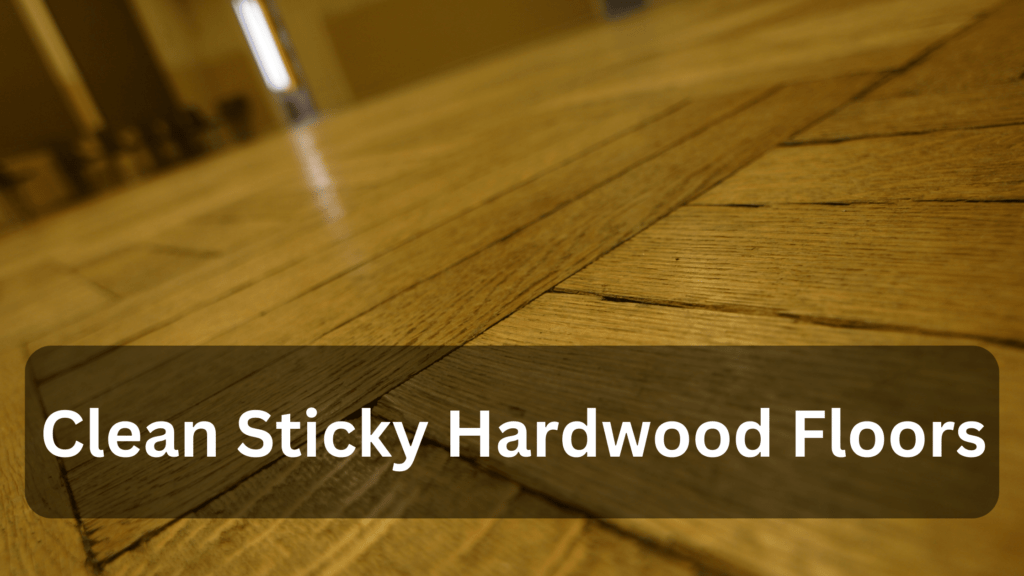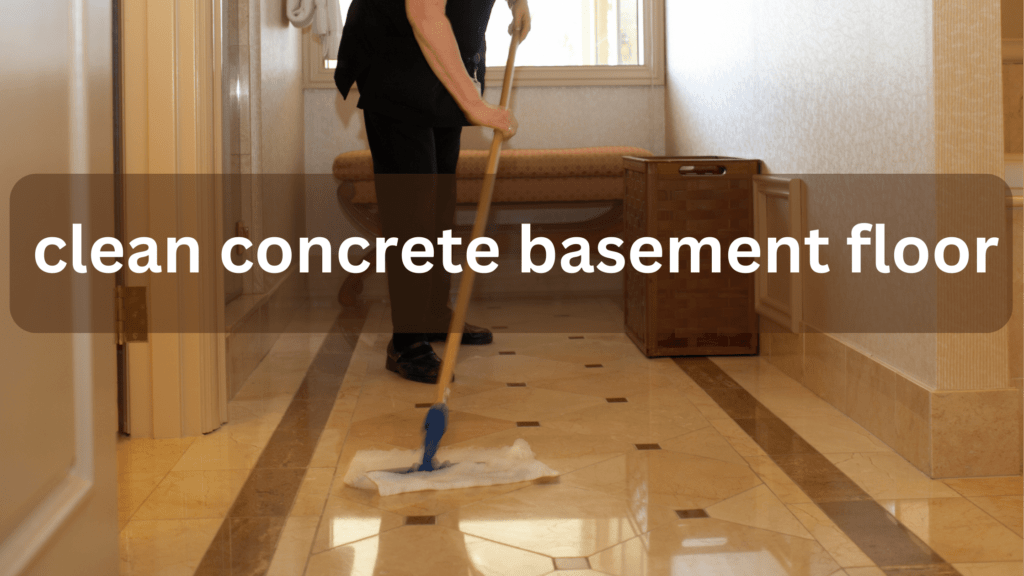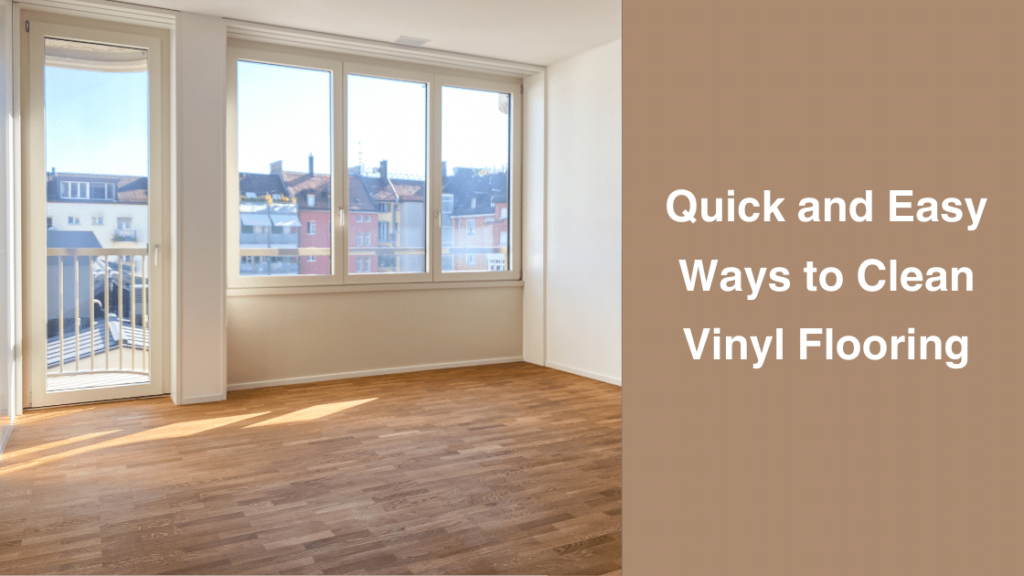
Vinyl flooring is a popular choice for many homeowners because it is durable, affordable, and easy to maintain. It provides the quality of parquet or tile flooring without the high cost. However, like all types of flooring, vinyl flooring needs to be properly maintained to keep it looking its best. In this blog, we will talk about simple and easy ways to clean carpets, necessary tools and cleaning solutions.
Vinyl flooring is known for its high performance and water resistance, making it an excellent choice for high-traffic areas in your home. With proper care and maintenance, vinyl flooring can last for years. By following proper cleaning procedures and using the right tools, you can easily remove dirt, stains, and grime from vinyl flooring.
Whether you have vinyl plank floors or vinyl tiles, these cleaning methods will keep your floors clean and looking their best. From routine maintenance tips to deep cleaning tips, we’ll cover everything you need to know to maintain the beauty and longevity of your carpet.

Key Highlights
- Cleaning vinyl flooring is quick and easy with just a few simple steps.
- You can use water and a microfiber mop to effectively clean your vinyl floors.
- Baking soda is a great cleaning agent that can remove tough stains from flooring.
- It’s to use safe cleaning solutions that won’t damage or discolor your vinyl floors.
- Regular maintenance and prevention can help keep your vinyl floors looking clean and beautiful.
- Using the right tools such as a microfiber mop and gentle cleaning solutions, is key to maintaining the longevity of your vinyl flooring.
Essential Tools for Cleaning Vinyl Flooring

To properly clean vinyl floors, you’ll need some basic tools. The best way to clean carpets is to use a mild detergent and a damp cloth or microfiber cloth. To avoid damaging the vinyl flooring surface, do not use abrasive cleaners or harsh chemicals.
When choosing a cleaning solution, choose warm water mixed with mild soap or a specialized floor cleaner. Do not use fruit juices or cleaning agents that will discolor or damage the plastic. Always read the instructions on the cleaner to make sure it is safe to use on plastic floors.
Use a microfiber or sponge-tipped mop when mopping. Microfiber mops are ideal for plastic floors because they gently remove dirt and grime. They also have good absorbency, allowing you to clean your floors without using a lot of water. Also, keep a microfiber cloth on hand to clean and dry your floor after mopping.
The Best Mops for Vinyl Floors
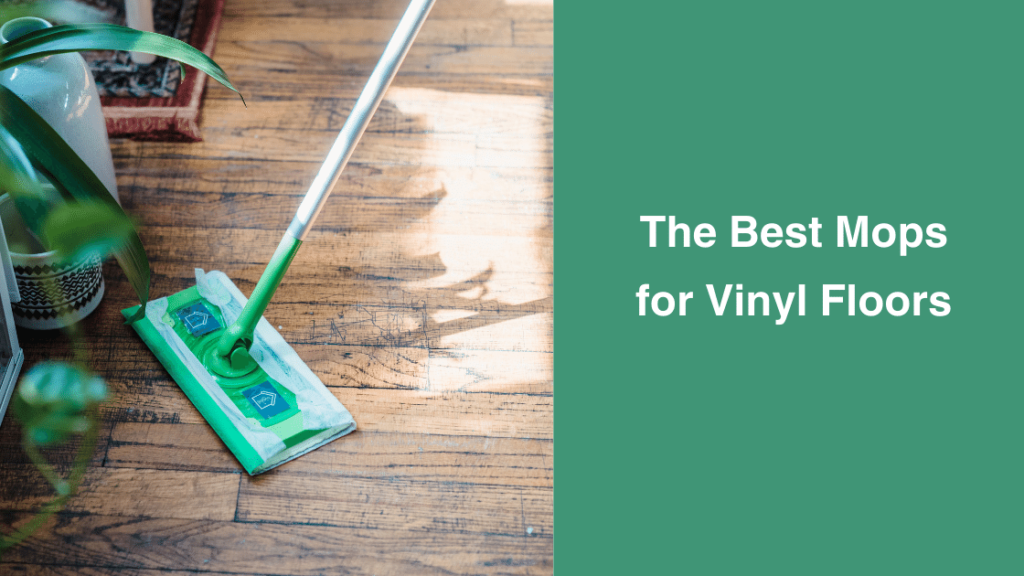
When it comes to mopping vinyl floors, choosing the right mop is essential. Here are some of the best mops for cleaning vinyl floors:
- Microfiber mop: A microfiber mop is ideal for vinyl floors as it is gentle, yet effective at removing dirt and grime. It has excellent absorption properties, allowing you to clean your floors without using excessive water.
- Spray mop: A spray mop is convenient for cleaning vinyl floors as it allows you to spray the cleaning solution directly onto the floor. This eliminates the need for a separate bucket of water and reduces the risk of excessive water use.
- Sponge mop: A sponge mop is another good option for vinyl floors as it is gentle and can effectively remove dirt and stains. Make sure to wring out the mop head well to avoid excessive water on the floor.
- Steam mop: While steam mops are effective for cleaning many types of flooring, they should be used with caution on vinyl floors. Excessive heat and moisture can cause damage to the vinyl, so it’s important to use a low setting and avoid prolonged exposure to steam.
Remember, regardless of the mop you choose, avoid using excessive water when cleaning vinyl floors to prevent damage and ensure a quick drying time.
Read More How to Clean Floor Drain successfully
Safe Cleaning Solutions You Can Use
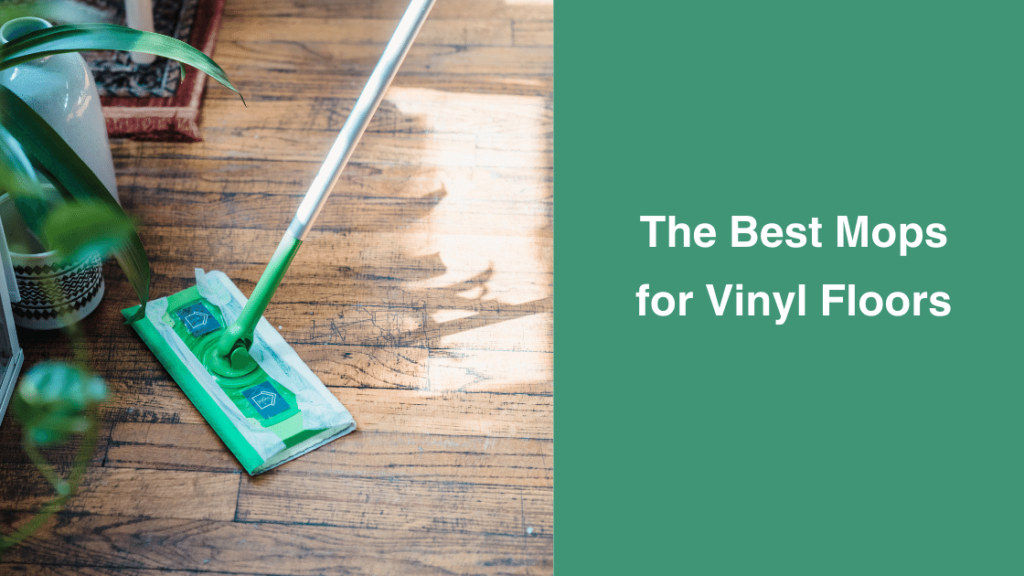
When cleaning vinyl flooring, it’s important to use safe cleaning solutions that won’t damage or discolor the surface. Here are some safe cleaning solutions you can use for vinyl floors:
- Warm water and mild dish soap: A simple mixture of warm water and a few drops of mild dish soap is an effective and safe cleaning solution for vinyl floors. It can help remove dirt, stains, and grime without causing damage.
- White vinegar and water: If you prefer a natural cleaning solution, you can mix equal parts white vinegar and water. This mixture can help remove tough stains and disinfect the vinyl floors.
- Avoid abrasive cleaners: Abrasive cleaners, such as bleach or ammonia-based products, should be avoided as they can cause discoloration and damage to vinyl flooring. Stick to gentle cleaning solutions to protect the integrity of your floors.
Remember to always test any new cleaning solution in a small inconspicuous area before applying it to the entire floor. This will help ensure that the solution doesn’t cause any unwanted discoloration or damage.
Daily Maintenance Tips
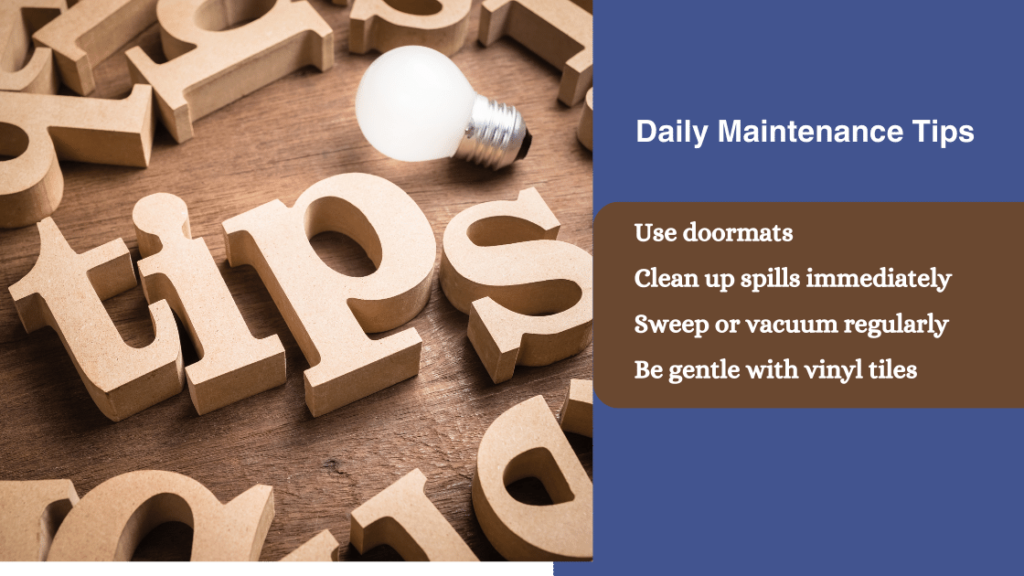
In addition to regular cleaning, there are some daily maintenance tips you can follow to keep your vinyl floors clean and looking their best. Here are a few tips:
- Use doormats: Place doormats at entryways to prevent dirt, dust, and debris from being tracked onto your vinyl floors. This will help minimize the amount of dirt that needs to be cleaned.
- Clean up spills immediately: Accidents happen, but it’s important to clean up spills as soon as possible to prevent stains and damage to the vinyl. Use a soft cloth or paper towel to blot up any spills and clean the area with a mild cleaning solution.
- Sweep or vacuum regularly: Regular sweeping or vacuuming will help remove dirt, dust, and debris from the surface of your vinyl floors. This will prevent scratches and keep your floors looking clean and fresh.
- Be gentle with vinyl tiles: If you have vinyl tiles, avoid dragging heavy furniture across the floor as it can cause scratches or tears. Use furniture pads or protective mats under furniture legs to prevent damage.
By following these daily maintenance tips, you can ensure that your vinyl floors stay clean and in great condition for years to come.
Preventing Dirt and Grime Buildup
Preventing dirt and grime buildup on your vinyl floors is essential for maintaining their appearance and longevity. Here are some tips to help prevent dirt and grime buildup:
- Use a broom or dust mop: Regularly sweeping or dusting your vinyl floors will help remove loose dirt and debris. Use a broom with soft bristles or a microfiber dust mop to avoid scratching the surface of the vinyl.
- Place doormats at entryways: By placing doormats or rugs at entryways, you can minimize the amount of dirt and debris that is brought into your home. This will help prevent dirt and grime from being tracked onto your vinyl floors.
- Vacuum regularly: If you prefer to vacuum your vinyl floors, make sure to use a vacuum with a soft brush attachment to avoid scratching the surface. Vacuuming can help remove dust and dirt that may be harder to reach with a broom.
By implementing these preventative measures, you can keep your vinyl floors looking clean and free from dirt and grime buildup.
The Right Way to Sweep Vinyl Floors
Sweeping is an essential part of maintaining clean vinyl floors, especially for vinyl plank flooring. Here’s the right way to sweep vinyl floors:
- Use a soft-bristle broom or dust mop: Start by using a broom or dust mop with soft bristles to gently sweep the surface of the vinyl floors. Make sure to reach all corners and edges to remove any loose dirt and debris.
- Pay attention to problem areas: If you notice any stubborn dirt or debris that is not easily swept away, use a soft towel or microfiber cloth to gently wipe it clean. Avoid using abrasive materials or scrubbing brushes that can scratch the surface of the vinyl.
- Sweep a second time: After sweeping the first time, go over the floor again to ensure that all dirt and debris are removed. This will help prevent any particles from scratching the vinyl surface or getting trapped in the floor’s texture.
By following these steps, you can effectively sweep your vinyl floors and keep them looking clean and free from dirt and debris.
Tackling Spills and Stains Immediately
Accidents happen, and spills and stains are inevitable on vinyl floors. However, tackling spills and stains immediately can help prevent them from becoming permanent. Here are some tips for handling spills and stains on vinyl floors:
- Clean up spills promptly: Use a soft cloth or paper towel to blot up any spills on the floor. Avoid rubbing the spill, as this can spread it further and potentially damage the vinyl.
- Be cautious with heavy furniture: When moving heavy furniture, take extra care to prevent scratching or damaging the vinyl floors. Use furniture sliders or lift the furniture instead of dragging it across the floor.
- Remove nail polish stains: If you accidentally spill nail polish on your vinyl floors, use a nail polish remover containing acetone to remove the stain. Make sure to test the remover in an inconspicuous area first to ensure it doesn’t cause any damage.
By addressing spills and stains immediately and using the proper cleaning techniques, you can keep your vinyl floors looking clean and stain-free.
How to Handle Spills Without Damaging Your Flooring
Vinyl flooring is known for its water resistance, but it’s still important to handle spills correctly to prevent any damage. Here’s how to handle spills on vinyl flooring without causing any harm:
- Act quickly: As soon as a spill occurs, grab a soft cloth or paper towel and blot the area to absorb as much liquid as possible. Avoid rubbing or scrubbing, as this can push the liquid into the flooring or cause scratches.
- Use a mild cleaning solution: If the spill leaves behind a stain or residue, mix a gentle cleaning solution of warm water and a mild dish soap. Dampen a clean cloth with the solution and gently blot the area to clean it.
- Dry thoroughly: After cleaning the spill, use a dry cloth or towel to remove any excess moisture from the floor. This will help prevent any water damage or warping.
By following these steps, you can effectively handle spills on your vinyl flooring without causing any damage.
Removing Stains with Household Ingredients
Household ingredients can be effective in removing tough stains from vinyl flooring. Here are some household ingredients you can use to tackle stains on vinyl floors:
- Baking soda: Create a paste of baking soda and water and apply it to the stain. Let it sit for a few minutes, then gently scrub the stain with a soft brush or cloth. Rinse the area with clean water and dry it thoroughly.
- Vinegar: Mix equal parts vinegar and water and apply it to the stain. Let it sit for a few minutes, then scrub the stain gently with a soft cloth or brush. Rinse with clean water and dry the area.
- Hydrogen peroxide: For stubborn stains, you can try using hydrogen peroxide. Apply it to the stain, let it sit for a few minutes, then wipe it away with a clean cloth or sponge.
Always test these ingredients in a small, inconspicuous area before applying them to the entire stain to ensure they won’t cause any damage or discoloration.
Deep Cleaning Strategies
In addition to regular cleaning, deep cleaning your vinyl floors is essential to remove embedded dirt and grime. Here are some strategies for deep cleaning your vinyl floors:
- Start with a thorough sweep or vacuum: Remove any loose dirt and debris from the floor before deep cleaning.
- Use a mop: Choose a mop with a microfiber or sponge head to apply a cleaning solution to the floor. Make sure to wring out the mop head well to avoid excessive moisture on the floor.
- Mop in sections: Divide the floor into sections and mop one section at a time. This ensures that the cleaning solution is evenly applied to the floor and prevents excessive moisture buildup.
By following these deep cleaning strategies, you can effectively remove dirt and grime from your vinyl floors, leaving them looking fresh and clean.
When and How to Mop for a Deeper Clean
Mopping is an effective way to achieve a deeper clean for your vinyl floors. Here’s when and how to mop for a deeper clean:
- Timing: Mop your vinyl floors when they require a deeper clean, typically every few weeks or as needed.
- Damp mop: Use a damp mop rather than a wet mop to avoid excessive moisture on the floor. Wring out the mop head well before mopping.
- Cleaning solution: Mix warm water with a mild dish soap or a specialized vinyl floor cleaner. Apply the cleaning solution to the mop head and wring out any excess moisture.
- Mop in sections: Divide the floor into sections and mop one section at a time. This ensures that the cleaning solution is evenly applied and prevents excessive moisture buildup.
By following these tips, you can achieve a deeper clean for your vinyl floors and remove any embedded dirt or grime.
DIY Cleaning Solutions vs. Commercial Cleaners
text table
| DIY Cleaning Solutions | Commercial Cleaners |
| Baking soda and water paste | Vinyl floor cleaner specifically designed for vinyl flooring |
| Vinegar and water mixture | All-purpose cleaner suitable for vinyl floors |
| Hydrogen peroxide | pH-neutral floor cleaner |
| ———————————- | ——————————————- |
When it comes to cleaning vinyl floors, you have the option of using DIY cleaning solutions or commercial cleaners. Here’s a comparison of DIY cleaning solutions and commercial cleaners for vinyl floors:
- DIY cleaning solutions: Homemade cleaners such as baking soda and water paste, vinegar and water mixture, and hydrogen peroxide can be effective in removing stains and dirt from vinyl floors. They are often more affordable and made from natural ingredients.
- Commercial cleaners: Commercial cleaners specifically designed for vinyl flooring can provide a convenient and effective cleaning solution. They are formulated to effectively clean and remove dirt and grime from vinyl floors. They may also have added features such as a pleasant fragrance or added shine.
Both DIY cleaning solutions and commercial cleaners can be effective in cleaning vinyl floors. Choose the option that works best for you based on your preferences and the specific needs of your vinyl floors.
Protecting Your Vinyl Flooring
To keep your vinyl flooring looking its best, it’s important to take steps to protect it from damage. Here are some ways to protect your vinyl flooring:
- Use furniture pads: Place furniture pads under the legs of your furniture to prevent scratches and dents when moving or rearranging furniture.
- Protective mats: Place protective mats or rugs in high-traffic areas or under heavy furniture to minimize wear and tear on your vinyl floors.
- Vinyl plank floors: If you have vinyl plank flooring, consider using coasters or protective mats under the legs of heavy furniture to distribute the weight more evenly and prevent indentations.
By implementing these protective measures, you can preserve the beauty and longevity of your vinyl flooring.
Do’s and Don’ts to Avoid Damage
When it comes to cleaning vinyl flooring, there are some important do’s and don’ts to keep in mind to avoid causing any damage. Here are a few tips to help you maintain the beauty and longevity of your vinyl floors:
- Do use gentle, non-abrasive cleaners specifically designed for vinyl flooring. Harsh chemicals and abrasive cleaners can strip away the protective layer of the vinyl, causing it to become dull and susceptible to damage.
- Do place furniture pads or coasters under the legs of heavy furniture to prevent scuffs and scratches. This will help distribute the weight and minimize the impact on the vinyl surface.
- Don’t use a beater bar attachment on your vacuum cleaner when cleaning vinyl flooring. The rotating bristles can scratch and damage the surface of the vinyl. Instead, use a vacuum cleaner with a soft brush attachment or sweep with a soft-bristle broom.
- Don’t let spills sit on the vinyl flooring for too long. Wipe up any spills or stains immediately with a damp cloth or sponge to prevent them from seeping into the vinyl and causing permanent damage.
By following these do’s and don’ts, you can ensure that your vinyl flooring remains in excellent condition for years to come.
| Do’s and Don’ts to Avoid Damage |
| – Do use gentle, non-abrasive cleaners specifically designed for vinyl flooring. |
| – Do place furniture pads or coasters under the legs of heavy furniture to prevent scuffs and scratches. |
| – Don’t use a beater bar attachment on your vacuum cleaner when cleaning vinyl flooring. |
| – Don’t let spills sit on the vinyl flooring for too long. Wipe up any spills or stains immediately with a damp cloth or sponge. |
Using Furniture Pads and Protective Mats
One of the best ways to protect your vinyl flooring is by using furniture pads and protective mats. Vinyl flooring can be susceptible to scuffs and scratches from heavy furniture, so it is important to take preventive measures to keep your floors looking their best.
- Place furniture pads under the legs of chairs, tables, and other heavy furniture to distribute their weight and prevent them from scratching the vinyl surface. Furniture pads are available in various sizes and materials, including felt and rubber.
- When moving furniture, use furniture sliders or place an area rug or sheets of cardboard on the floor to prevent dragging and scratching. Furniture sliders are made of materials that allow furniture to glide smoothly without causing damage to the vinyl.
- Use protective mats in high-traffic areas or under office chairs to prevent wear and tear. Vinyl tiles can be more durable than other types of vinyl flooring, but they still benefit from extra protection in areas prone to heavy use.
By using furniture pads and protective mats, you can extend the lifespan of your vinyl flooring and keep it looking beautiful for years to come.
Troubleshooting Common Issues
Even with regular maintenance, vinyl flooring may encounter some common issues. One such issue is stubborn scuffs that may not be removed through regular mopping. In such cases, you can use mineral spirits or a hardware lubricant to gently scrub away the scuffs. Apply a small amount of the solution to a soft towel and rub the scuffed area until the marks are removed. Be sure to clean away any residue with a vinegar and water solution.
Scuff marks are another common problem with vinyl flooring. These marks can be easily removed by using a scrubbing brush and a mixture of warm water and mild detergent. Gently scrub the scuffed area until the marks are gone, then rinse with clean water. Regularly addressing scuffs and marks will keep your vinyl flooring looking pristine.
Dealing with Scuff Marks and Scratches
Scuff marks and scratches can be a common occurrence on vinyl plank flooring, especially in high-traffic areas. However, there are simple and effective ways to deal with these issues.
For scuff marks, you can use a tennis ball or white eraser. Gently scrub the worn areas with this tool; The wear will begin to disappear. If the marks are particularly stubborn, you can try using warm water and mild soap. Apply the solution to a soft cloth and gently rub the brush until it becomes invisible. Finally, rinse the area with clean water and dry thoroughly.
You can use the floor repair tool to dig deeper into the carpet. These kits often contain fillers that you can use to fill in scratches and make them less noticeable. Please follow the instructions provided with the product to ensure correct application and mixing with the surrounding soil.
Reviving Dull Vinyl Flooring
Over time, vinyl flooring will begin to lose its shine and look dull. However, you can easily recover with the right cleaning techniques. One option is to use vinyl floor wax or polish. These products can add a layer of shine and protection to your floors, leaving them looking like new. Before using a scrub or polish, be sure to clean the floor thoroughly to remove any dirt or debris.
Follow the manufacturer’s instructions for using wax or wax. In most cases, you’ll want to apply a thin layer with a clean scrubber or application pad. Allow the product to dry completely before getting on the floor. Applying polish or polish will make your carpet shiny and protected.
Advanced Care Techniques
While regular maintenance can help keep your vinyl flooring in good shape, there are some advanced treatments that can extend its life and appearance. Such a method is a good seal. Sealed vinyl flooring can provide an added layer of protection against stains, scratches and water damage. It is recommended that you consult a professional to ensure that the sealing process is used for your specific vinyl flooring.
Another best maintenance technique is maintenance work. Regularly deep vacuuming your vinyl floor can remove dirt, grime, and stains that regular mopping cannot fix. Professionals have the skills and tools to thoroughly clean your carpet and leave it looking new and restored. Consider scheduling maintenance service for your vinyl flooring once a year or as needed.
The Importance of Proper Sealing
Proper sealing of vinyl flooring is crucial to maintaining its water resistance and durability. The gasket creates a protective layer on the plastic surface, preventing water and other water from entering the seams and damaging them. It also helps prevent stains, scratches and scuffs.
Be sure to wash and dry your carpet thoroughly before closing. Apply vinyl floor sealer using a clean mop or applicator according to the manufacturer’s instructions. Allow the sealant to dry completely before moving onto the floor or returning furniture to the room. Inspect the sealant regularly for signs of wear or damage and reapply as necessary to maintain protection.
Proper sealing not only extends the lifespan of your vinyl flooring but also keeps it looking its best for years to come.
When to Consider Professional Cleaning
Regular cleaning and maintenance can keep floors in good condition, but sometimes maintenance is necessary. Cleaning your carpets can help remove stubborn stains, embedded dirt and grime that regular cleaning can’t fix.
Consider professional cleaning for your vinyl flooring in the following scenarios:
- Heavy traffic areas that are difficult to clean with regular maintenance.
- Deep-set stains or discoloration that cannot be removed with household cleaning solutions.
- Vinyl flooring that has not been properly cleaned or maintained for an extended period.
- If you want to ensure a thorough and professional cleaning that will rejuvenate your vinyl flooring.
Professional cleaners have the expertise, equipment, and specialized cleaning solutions to effectively deep clean your vinyl flooring. They can restore its original shine and appearance, leaving it looking like new.
Conclusion
As a result, maintaining the cleanliness and durability of your carpet does not have to be a difficult task. By following the simple tools, daily cleaning tips, and deep cleaning tips in this guide, you can keep your floors looking fresh and beautiful next year. Remember to use safe cleaning solutions, contain spills immediately, and take precautions to prevent damage. With this quick and easy cleaning method, your carpets will continue to shine throughout your home.
Frequently Asked Questions
Can I use a steam mop on vinyl flooring?
It is not recommended to use a steam mop on plastic floors. Although vinyl flooring is generally waterproof, excess water and heat from the washing machine can damage the floor. Heat can soften the plastic, causing it to crack or peel. Additionally, excess moisture can seep into the seams and edges of your flooring, causing water damage and potential growth. It is best to wipe your carpet regularly with warm water and a mild detergent.
What is the best homemade cleaner for vinyl floors?
A simple and effective homemade cleaner for vinyl floors can be made by mixing equal parts white vinegar and warm water. This solution can be used to mop the floors and remove dirt, stains, and grime. For tough stains or scuffs, a paste of baking soda and water can be applied and gently scrubbed with a soft cloth or brush. This homemade cleaner is safe, affordable, and environmentally friendly.
How often should vinyl floors be deep cleaned?
How often you need to clean your vinyl floors depends on many factors, including the amount of traffic they receive and the level of maintenance they receive. As a general rule, plastic floors should be thoroughly cleaned at least once a year or as needed. If your vinyl flooring receives heavy traffic or is regularly affected by spills and stains, it may require more frequent cleaning. A professional cleaning service can provide proper cleaning and care for your vinyl flooring.

